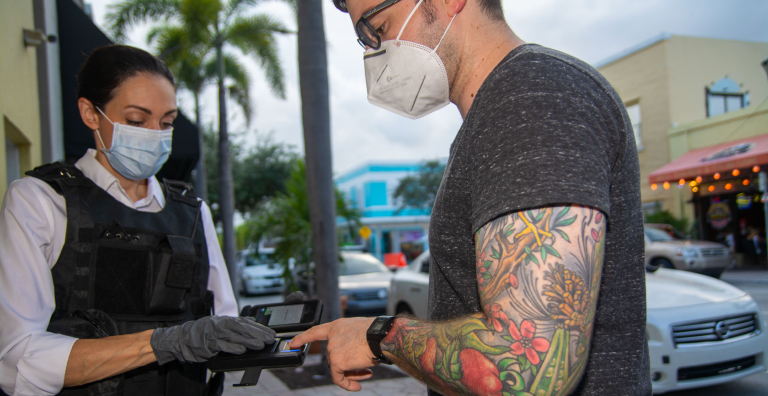Law Enforcement’s Short List for Selecting a Mobile Biometric Identification Solution
The advantages of putting mobile biometric identification technology into the hands of law enforcement are obvious. The ability to quickly verify an individual’s identity while in the field allows officers to work more safely and efficiently. But how do you ensure you’re arming your officers with the right mobile biometric identification tool that will perform as tough and reliably as your team? Here are some requirements and a short checklist to consider when selecting the best solution:
1. Work With What’s Already in Hand — Literally
Choose an offering that runs on the mobile phones your officers already have in hand, as this translates to a tremendous cost-savings play for your agencies. Your teams benefit from using a digital device they are already familiar with and avoiding the need to lug around additional gadgets while moving around town. As technologies advance and evolve, it’s a cinch to download the latest updates or transfer the mobile biometric application when phones are upgraded.
2. Put the User’s Experience First
Beyond the convenience and comfort of running biometric ID checks on a mobile device that’s already part of your daily routine, the solution itself needs to be intuitive and easy to use to ensure law enforcement stays steps ahead of whatever and whoever crosses their path. Officers already have a challenging job. They don’t need to deal with tech obstacles while on patrol, and they won’t have to with mobile biometric technology that has never been easier to use.
Insist on a solution that only requires a couple of steps and a matter of minutes to conduct accurate, swift fingerprint identity checks. The experience should be simple enough to allow officers to:
- Capture fingerprints
- Select a reason for capture
- Submit a search (for cross-checking against state and federal criminal databases)
- Review Hit/No-Hit responses
3. Ensure It Can Weather the Elements
Innovative mobile fingerprint readers are purposefully designed for frequent use and to withstand a range of weather conditions and skin types to function as intended anytime, anyplace. Seek out a compact, durable fingerprint reader that’s able to capture high-quality images in all lighting conditions, and one that can accurately read prints regardless of dirt, sweat, dryness or shallow skin.
4. Cross-Check for Compliance and Security
Another critical requirement is to make sure the mobile biometric solution meets regulatory compliance for law enforcement use. For example, devices accessing criminal data used by law enforcement must follow FBI Criminal Justice Information Services (CJIS) compliance for mobile device security. Make sure the solution is also in alignment with any criteria set forth by the law enforcement departments in your region/state.
For added security and user privacy, consider solutions that are designed using Secure Software Development Lifecycle (SSDL) methodology to ensure they can be securely integrated into your infrastructure. The SSDL process also gives insight into potential security gaps and threats before they occur — a critical step for implementing mobile biometric technology into a law enforcement setting.
5. Get a Proven Partner on Your Radar
Finally, partner with security experts that have a proven track record in delivering high-caliber designs and technology when it comes to proven identity solutions for law enforcement. Work with a vendor who understands law enforcement workflows so your specific requirements can be easily built into the mobile biometric identification system. In addition, make sure the solution works for you, not the other way around. Ask how the solution can pivot with your agency’s needs and over time to preserve your investment. These inquires can help you find the right solution to truly optimize and streamline your workflows, improving efficiency while saving time and costs.
Your Rapid ID Checklist
Feel like you have all the right information to determine which Rapid ID to add to the arsenal? Work through this checklist to reinforce your decision:
See how officers keep the upper hand using a Rapid ID mobile biometric identification solution.
Are you ready to bring HID Rapid ID into your lineup? Let’s connect!
